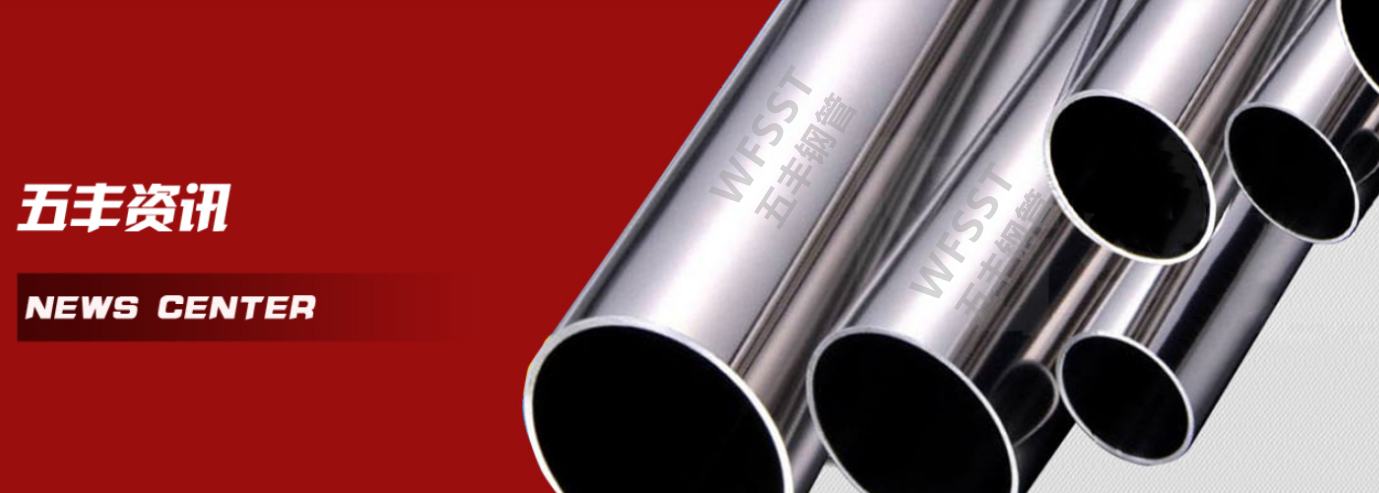
News details
News Information >Details
What are the causes and treatment methods of stainless steel?
2021-06-02 visit:7766
Stainless steel, as the name suggests, refers to the weak corrosive medium such as air, steam and water and the chemical corrosive medium such as acid, alkali and salt, also known as stainless acid resistant steel. But in the practical application, some stainless steel is accidentally rusted.
When brown rust spots (spots) appear on the surface of stainless steel pipes, people are surprised: they think that "stainless steel is not rusty, rust is not stainless steel, it may be that there is a problem with the steel". In fact, this is a one-sided wrong view of the lack of understanding of stainless steel. Stainless steel will rust under certain conditions. Stainless steel has the ability to resist atmospheric oxidation, i.e. rust resistance, but also has the ability to corrode in the medium containing acid, alkali and salt, i.e. corrosion resistance. However, the corrosion resistance of the steel varies with its chemical composition, additive state, service condition and environmental medium type. For example, 304 steel pipe has absolutely excellent corrosion resistance in dry and clean atmosphere, but when it is moved to the coastal area, it will soon rust in the sea fog containing a lot of salt, while 316 steel pipe performs well.
Therefore, not any kind of stainless steel can resist corrosion and rust in any environment. Stainless steel is a very thin, firm, fine and stable chromium rich oxide film (protective film) formed on its surface, which can prevent the continuous infiltration and oxidation of oxygen atoms and obtain the ability of corrosion resistance. Once there is some reason, the film is constantly damaged, oxygen atoms in the air or liquid will continue to penetrate, or iron atoms in the metal will continue to separate out, forming loose iron oxide, and the metal surface will be constantly corroded.
There are many forms of destruction of the surface film.
First, inherent intergranular corrosion.
The material without Ti and Nb has the tendency of intergranular corrosion. The addition of titanium and niobium, together with stabilization treatment, can reduce intergranular corrosion. Stainless steel is a kind of high alloy steel which can resist corrosion in the air or chemical corrosion medium. It has beautiful surface and good corrosion resistance. It does not need to go through surface treatment such as color plating, but plays its inherent surface properties. It is used in many aspects of steel. It is usually called stainless steel. The representative properties are 13 chromium steel, 18-8 chromium nickel steel and other high alloy steel. From the point of view of metallography, because stainless steel contains chromium, a very thin chromium film is formed on the surface of stainless steel, which can isolate the oxygen invading into the steel for corrosion resistance. In order to maintain the inherent corrosion resistance of stainless steel, steel must contain more than 12% chromium. Used for welding. The lower carbon content makes the precipitation of carbides in the heat affected zone near the weld minimum, and the precipitation of carbides may lead to intergranular corrosion of stainless steel in some environments.
Second, there is no solution treatment.
The alloy elements do not dissolve into the matrix, resulting in low alloy content and poor corrosion resistance.
Third, there are chloride ions in the environment.
Chloride ions exist widely, such as salt / sweat / seawater / sea breeze / soil, etc. The corrosion of stainless steel in the presence of chloride ion is very fast, even more than that of ordinary low carbon steel. Therefore, the use of stainless steel environment requirements, and need to often wipe, remove dust, keep clean and dry( In this way, we can give him a "misuse" There is an example in the United States: an enterprise uses an oak container to hold a solution containing chloride ions. The container has been used for nearly a hundred years, and it was planned to be replaced in the 1990s. Because the oak material is not modern enough, the container leaked due to corrosion 16 days after it was replaced with stainless steel.
When brown rust spots (spots) appear on the surface of stainless steel pipes, people are surprised: they think that "stainless steel is not rusty, rust is not stainless steel, it may be that there is a problem with the steel". In fact, this is a one-sided wrong view of the lack of understanding of stainless steel. Stainless steel will rust under certain conditions. Stainless steel has the ability to resist atmospheric oxidation, i.e. rust resistance, but also has the ability to corrode in the medium containing acid, alkali and salt, i.e. corrosion resistance. However, the corrosion resistance of the steel varies with its chemical composition, additive state, service condition and environmental medium type. For example, 304 steel pipe has absolutely excellent corrosion resistance in dry and clean atmosphere, but when it is moved to the coastal area, it will soon rust in the sea fog containing a lot of salt, while 316 steel pipe performs well.
Therefore, not any kind of stainless steel can resist corrosion and rust in any environment. Stainless steel is a very thin, firm, fine and stable chromium rich oxide film (protective film) formed on its surface, which can prevent the continuous infiltration and oxidation of oxygen atoms and obtain the ability of corrosion resistance. Once there is some reason, the film is constantly damaged, oxygen atoms in the air or liquid will continue to penetrate, or iron atoms in the metal will continue to separate out, forming loose iron oxide, and the metal surface will be constantly corroded.
There are many forms of destruction of the surface film.
First, inherent intergranular corrosion.
The material without Ti and Nb has the tendency of intergranular corrosion. The addition of titanium and niobium, together with stabilization treatment, can reduce intergranular corrosion. Stainless steel is a kind of high alloy steel which can resist corrosion in the air or chemical corrosion medium. It has beautiful surface and good corrosion resistance. It does not need to go through surface treatment such as color plating, but plays its inherent surface properties. It is used in many aspects of steel. It is usually called stainless steel. The representative properties are 13 chromium steel, 18-8 chromium nickel steel and other high alloy steel. From the point of view of metallography, because stainless steel contains chromium, a very thin chromium film is formed on the surface of stainless steel, which can isolate the oxygen invading into the steel for corrosion resistance. In order to maintain the inherent corrosion resistance of stainless steel, steel must contain more than 12% chromium. Used for welding. The lower carbon content makes the precipitation of carbides in the heat affected zone near the weld minimum, and the precipitation of carbides may lead to intergranular corrosion of stainless steel in some environments.
Second, there is no solution treatment.
The alloy elements do not dissolve into the matrix, resulting in low alloy content and poor corrosion resistance.
Third, there are chloride ions in the environment.
Chloride ions exist widely, such as salt / sweat / seawater / sea breeze / soil, etc. The corrosion of stainless steel in the presence of chloride ion is very fast, even more than that of ordinary low carbon steel. Therefore, the use of stainless steel environment requirements, and need to often wipe, remove dust, keep clean and dry( In this way, we can give him a "misuse" There is an example in the United States: an enterprise uses an oak container to hold a solution containing chloride ions. The container has been used for nearly a hundred years, and it was planned to be replaced in the 1990s. Because the oak material is not modern enough, the container leaked due to corrosion 16 days after it was replaced with stainless steel.





